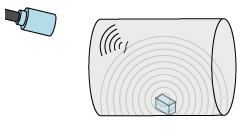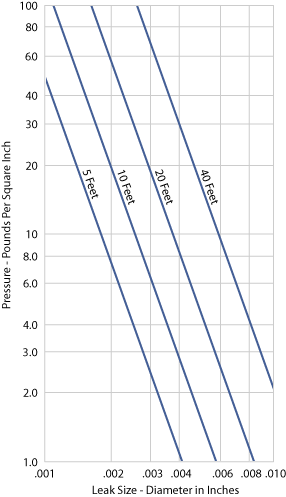How does the Son-Tector ultrasonic detector work?
Most mechanical failures or leaks generate ultrasonic noises which are inaudible to the human ear. It is simple to find problems with a tool designed to hear ultrasonic noises generated by the problem itself, and not hear interfering background noises. When equipment is operating correctly, it generates very little ultrasonic sound.
Pressurized leaks and mechanical malfunction problems generate sounds in the 35,000 – 45,000 cycles per second region. The Son-Tector converts and amplifies the 35,000 – 45,000 cycles to frequencies that can be heard by humans.
The user can hear and evaluate whether a mechanical sound is normal or abnormal based on his/her real world experience. A good bearing sounds one way, a bad bearing sounds another. A good steam trap sounds one way, a faulty steam trap sounds another. It takes just a few trials to be comfortable with the differences.
There are three different ways the Son-Tector is used to hear malfunctions or leaks:
 Microphone Hand Probe Pressurized or vacuum leaks make noise when the escaping molecules bang into each other. The Son-Tector hears the banging molecules. Sweep the area with the hand probe and the leak is quickly located. The closer you are to the leak, the louder the sound and the higher the meter registers.
Microphone Hand Probe Pressurized or vacuum leaks make noise when the escaping molecules bang into each other. The Son-Tector hears the banging molecules. Sweep the area with the hand probe and the leak is quickly located. The closer you are to the leak, the louder the sound and the higher the meter registers.
 Son-Caster Ultrasonic Noise Generator
Son-Caster Ultrasonic Noise Generator
Non-pressurized leaks, such as container leaks, don’t make noise. The Son-Caster is placed inside the vessel to create ultrasonic noise. Go outside the vessel to locate where the ultrasonic sound is leaking out.
 Contact Probe
Contact Probe
Internal mechanical malfunctions are identified and located with the contact probe. The probe hears by physically touching the housing that encloses the problem.
Leak Sensitivity
 Ultrasonic detection will work for leaks in the order of .5 cc per second.
Ultrasonic detection will work for leaks in the order of .5 cc per second.
Smaller leaks do not agitate air molecules enough to create acoustic energy.
The chart shows the general relationship between pressure differential, leak size, and distance from the leak.



